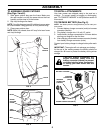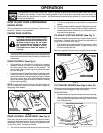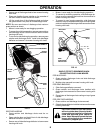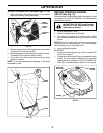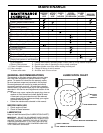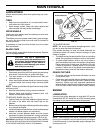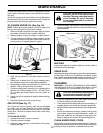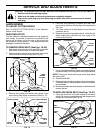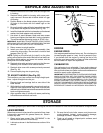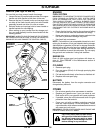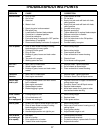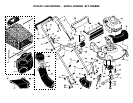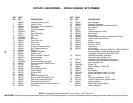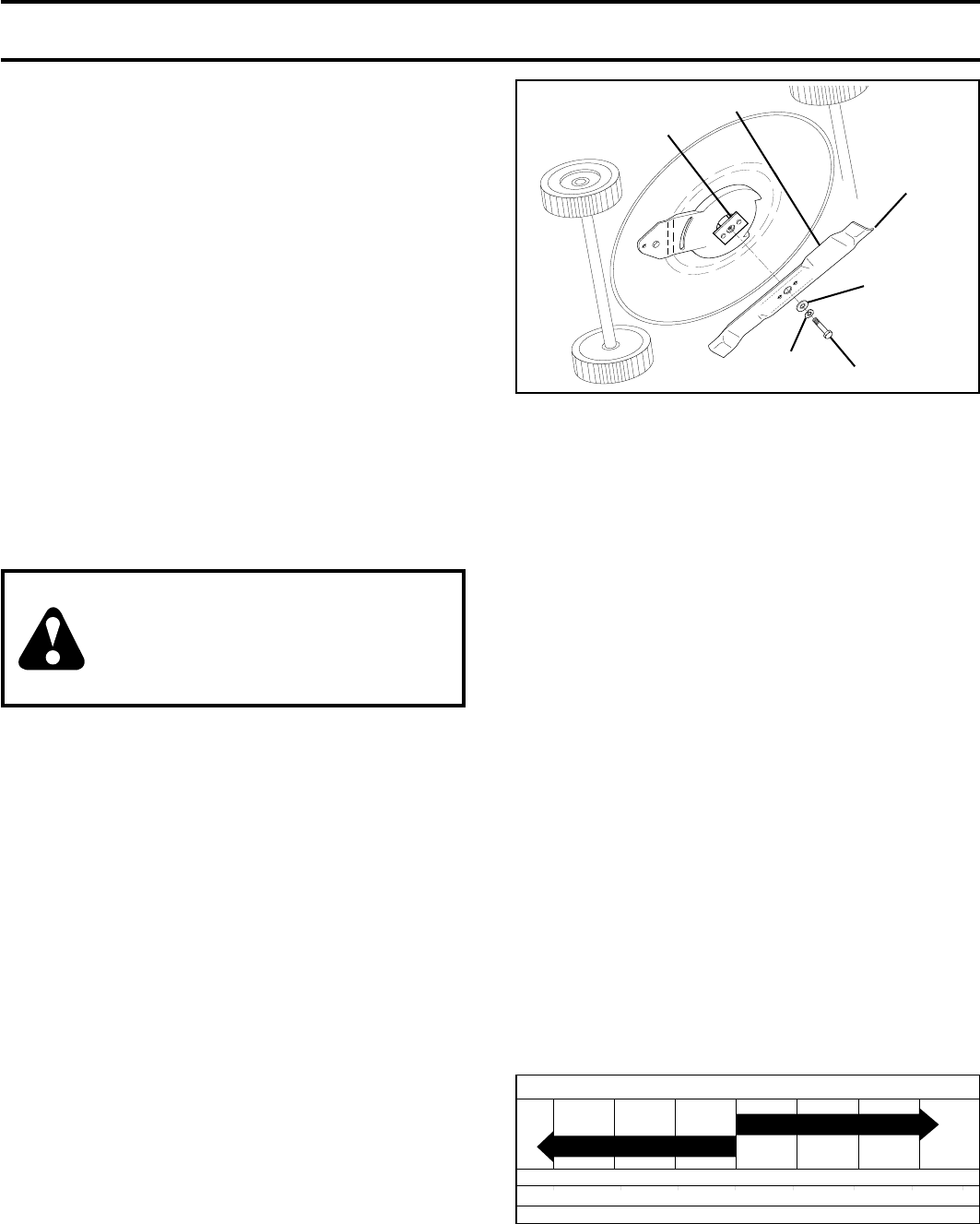
12
LAWN MOWER
Always observe safety rules when performing any main-
te nance.
TIRES
• Keep tires free of gasoline, oil, or insect control chem-
i cals which can harm rubber.
• Avoid stumps, stones, deep ruts, sharp objects and
other hazards that may cause tire damage.
DRIVE WHEELS
Check rear drive wheels each time be fore you mow to be
sure they move freely.
The wheels not turning freely means trash, grass cuttings,
etc. are in the drive wheel area and must be cleaned to
free drive wheels.
If necessary to clean the drive wheels, be sure to clean
both rear wheels.
BLADE CARE
For best results, mower blade must be kept sharp. Re place
bent or dam aged blades.
CAUTION: Use only a replacement
blade approved by the manufacturer of
your mower. Using a blade not approved
by the manufacturer of your mower is
hazardous, could damage your mower
and void your warranty.
TO REMOVE BLADE (See Fig. 15)
1. Disconnect spark plug wire from spark plug and place
wire where it cannot come in contact with plug.
2. Turn lawn mower on its side. Make sure air fi lter and
carburetor are up.
3. Use a wood block between blade and mower hous ing
to prevent blade from turning when re mov ing blade
bolt.
NOTE: Protect your hands with gloves and/or wrap blade
with heavy cloth.
4. Remove blade bolt by turning counter-clockwise.
5. Remove blade and attaching hardware (bolt, lock
wash er and hardened wash er).
TO REPLACE BLADE (See Fig. 15)
1. Position blade on the blade adapter aligning the two
(2) holes in the blade with the raised lugs on the
adapter.
2. Be sure the trailing edge of blade (opposite sharp edge)
is up toward the engine.
3. Install the blade bolt with the lock washer and hard ened
washer into blade adapter and crank shaft.
4. Use block of wood between blade and lawn mower
housing and tighten the blade bolt, turning clock wise.
• The recommended tightening torque is 35-40 ft. lbs.
IMPORTANT: BLADE BOLT IS HEAT TREATED. IF BOLT NEEDS
REPLACING, REPLACE ONLY WITH APPROVED BOLT SHOWN
IN THE REPAIR PARTS SECTION OF THIS MANUAL.
MAINTENANCE
TEMPERATURE RANGE ANTICIPATED BEFORENEXT OIL CHANGE
SAE VISCOSITY GRADES
-20 0 30 40
80
100
-30
-20 0
20 30 40
F
C
32
-10
10
60
5W-30
SAE 30
il i h 1
FIG. 15
BLADE ADAPT ER
BLADE BOLT
HARDENED
WASHER
LOCK
WASHER
BLADE
TRAILING
EDGE
TO SHARPEN BLADE
NOTE: We do not recommend sharp en ing blade - but if
you do, be sure the blade is balanced.
Care should be taken to keep the blade balanced. An
un bal anced blade will cause eventual damage to lawn
mower or engine.
• The blade can be sharp ened with a fi le or on a grinding
wheel. Do not attempt to sharpen while on the mower.
• To check blade balance, drive a nail into a beam or
wall. Leave about one inch of the straight nail ex posed.
Place center hole of blade over the head of the nail.
If blade is balanced, it should remain in a horizontal
position. If either end of the blade moves downward,
sharpen the heavy end until the blade is balanced.
GRASS CATCHER
• The grass catcher may be hosed with water, but must
be dry when used.
• Check your grass catcher often for damage or de te ri o -
ra tion. Through normal use it will wear. If catcher needs
replacing, replace only with ap proved replacement
catcher shown in the Repair Parts section of this manual.
Give the lawn mower model number when ordering.
ENGINE
LUBRICATION
Use only high quality detergent oil rated with API service
classifi cation SG–SL. Select the oil's SAE viscosity grade
according to your expected operating temperature.
NOTE: Multi-viscosity oils (5W30, 10W30 etc.) improve
starting in cold weather, and you should check your engine
oil level frequently to avoid possible engine damage from
running low on oil.




